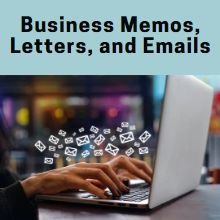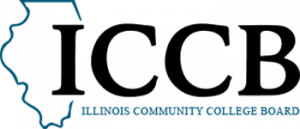What is the Lesson Bank?
These excellent, thorough lesson plans were created by outstanding teachers in Illinois. The Adult Education Professional Development Network members were inspired by the lesson development of these individuals as they constructed and submitted their plans. The Lesson Bank was born out of the excellence of their work in the Professional Pathways trainings. We thank them for sharing their lessons and for their desire to improve not only their own instruction but also the instruction around the state. Thanks for lifting all the boats! We hope you are inspired by the tri-lens approach of integrating Illinois Essential Employability Skills, Universal Design for Learning (UDL), and content standards.
Contribute to the Lesson Bank
Learn more about how to contribute to the Lesson Bank and earn PD!
Read More
Becoming an Expert Learner with UDL
This lesson brings adult learners in to the learning process. The two-part lessons introduce learners to UDL, ask that they reflect on how they learn, and consider how it affects life outside of the classroom.
Read More
3 Branches of Government
Federalism is defined and the Constitution is examined as students learn how and why the U.S. government consists of 3 branches and better understand the respective role, functions, and powers of each.
Read More
Business Letter, Memo, and Email Writing
This 4-day lesson including assignments introduces students to basic business writing, memo writing, proper email etiquette and professional correspondence. In the end students will draft various business correspondence.
Read More
Career Development
This 3 part lesson will allow students an opportunity to explore different career opportunities available depending on several factors that are most important to them, while also practicing presentation skills.
Read More
Conservation: Writing and Expository Paragraph
During this lesson students identify cause and effect relationships while learning the importance of conservation. The lesson concludes with students creating a Google slide explaining the importance of conservation
Read More
Cost-Benefit of a Degree or Certificate
This lesson can be completed over 1-2 days and helps students research the cost of a certificate or degree program and compare that to the median income for that profession in their area.
Read More
Data Collection and Analysis with a Bivariate Bar Graph
Students will practice their multiplication fast facts to increase fluency. They will record their scores as they practice and then use their self-collected date to create a bi-variate bar graph, which they'll analyze when they're finished. Finally, they'll connect the concept of data analysis to the world at large recognizing how it is used in everyday events like news broadcasts.
Read More
Discovering How to Find Surface Area of Right/Rectangular Prisms
Students are presented with an activation of background knowledge for finding the area of a rectangle. Then, they are presented with slides that guide them from area of a rectangle, to area of a right prism using step by step scaffolding. Finally, students apply their knowledge in an application activity that allows them to demonstrate what they've learned and extend to a challenge.
Read More
Ecosystems
During this lesson students identify the meanings of words and work collaboratively with classmates while applying research strategies to explore ecosystems and publish and present findings.
Read More
Exercise
This three-part lesson introduces students to the importance of different types of exercise. Activities in this lesson include calculating target heart rates and creating an individualized exercise plan.
Read More
Factors, Multiples, Least Common Multiple, and Greatest Common Factor
Students are presented with slides that explain the concepts of factors, multiples, greatest common factors, and least common multiples. The slides include an application activity with real world example problems at the end that may be completed in groups, as a class, or individually. opportunities for practice are embedded throughout the slides.
Read More
Fonts
This lesson applies the scientific method to fonts. Students will create surveys and will analyze the data they gather.
Read More
Fractions
Lesson 1: The Unit Fraction ABE NRS 2 Lesson Objectives: Count and name the fractional unit of a partitioned shape Partition a shape or number into 1-8 equal parts Choose a unit fraction that is less than or greater than another, reasoning about the size of the units Keywords: fraction, partition,…
Read More
Goal-Setting
This 2-part lesson introduces students to the importance of goal-setting and ends with students creating their own SMART goals.
Read More
Goal-Setting for LA and Math
Lesson 1: Set for Success: the language of goal setting ABE NRS 3-4 Lesson Objectives: Explain the attributes of a proper goal, using goal-focused vocabulary terms Discuss various approaches to effective goal setting. Distill their earned knowledge of goal attributes into a creation…
Read More
Heredity
Whole class and small group activities engage students as they learn about genotypes, phenotypes, create Punnett Squares, and use ratios to predict genetic outcomes of offspring.
Read More
Immune System
Students explore the differences between diseases, infections, bacteria and viruses and the body’s protective functions. Understanding of the Scientific Method is reinforced as immunization resulting from vaccines is examined.
Read More
Inequalities
This lesson guides students through the language of inequalities while introducing foundational math skills.
Read More
Infection
This three-part lesson introduces students to the concept of infection and infection prevention. Activities in this lesson include modeling the spread of infectious disease, reading a thermometer, and creating a public service announcement about an infectious disease.
Read More
Job Interviews
This lesson introduces students to common interview clothing and behavior using a video and graphic organizer. Students also practice making recommendations using the word 'should'.
Read More
Learning Styles
This lesson explores the various learning styles and asks students to reflect on how they learn.
Read More
March on Washington
This lesson allows students to explore historical Civil Rights marches and reflect on the similarities and differences between those events and happenings of today, while practicing question strategies and using graphic organizers to create an explanatory text.
Read More
Medicine
This three-part lesson introduces students to health and safety considerations related to taking medications. Activities in this lesson include analyzing medicine labels, performing internet research on medications, and doing simple medication calculations.
Read More
Note-Taking
This 3-part lesson will allow students to learn and implement note-taking strategies needed for college or a certification program. The skills learned in this lesson can be easily adapted to content currently being taught.
Read More
Nutrition
This three-part lesson introduces students to the concept of nutrition. Activities in this lesson include evaluating a food label and designing a healthy meal plan, among many others.
Read More
Ratios, Proportions, and Percents
Students will be introduced to the three concepts of ratios, proportions, and percents via slides. The slides offer an opportunity for the students to practice with each of these concepts. Next, the students have the opportunity to apply their knowledge working alone or with a partner on a worksheet. Finally, included is an assessment quiz.
Read More
Research Paper
This 3-part lesson allows students an opportunity to develop the research skills needed to write a research paper. The lesson can be implemented using current content you are working with.
Read More
Responsible Internet Use
This lesson introduces students to safe internet use and avoiding identity theft, unhealthy online interactions, and false information.
Read More
Short Story Reading
In this lesson students will analyze key components of a story. Students will make predictions and develop alternate endings to the story.
Read More
The Constitution
This lesson illustrates the structure, function, and powers of the government in the United States. Students will have the opportunity to discuss the purpose and structure of the Declaration of Independence and differentiate between the Declaration of Independence and the U.S. Constitution.
Read More
Thesis Statement
The lesson introduces the purpose of the thesis statement and how to construct an effective thesis statement. Included are assignments for choosing an effective thesis statement and constructing a thesis statement for an extended response.
Read More
Time Management
NRS 3-6 Objectives: Fill out a weekly schedule to assess when they have time to study and complete homework for the course Write a reflection on time management Share information learned in class with classmates Keywords: prioritize, commitment, looming, mundane, optimal, time management…
Read More
Voting Rights (Civil Rights)
This Civil Rights lesson explores the use of context clues to determine word meaning, while identifying author's use of evidence to support reasons, and offers an opportunity for students to write an opinion piece about the importance of voting.
Read More
Writing to Persuade
This lesson will show students how to develop a Persuasive Extended Response following a six-step process. The introduction and use of graphic a graphic organizer and corresponding assignment are included.
Read More







